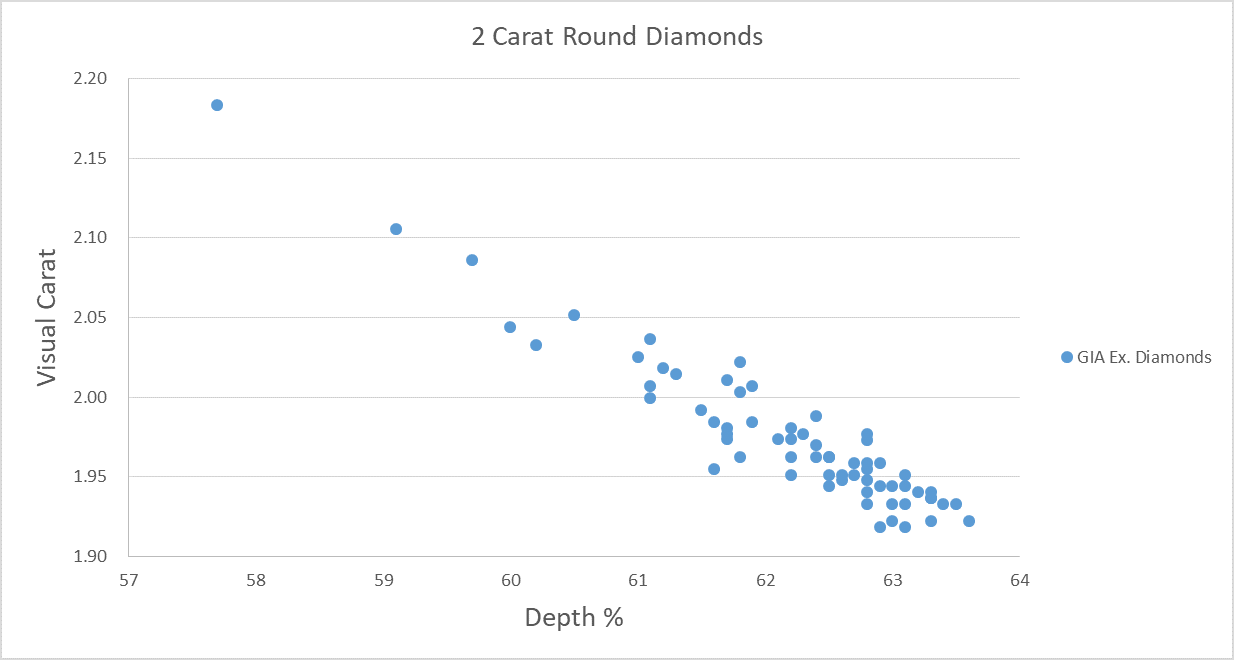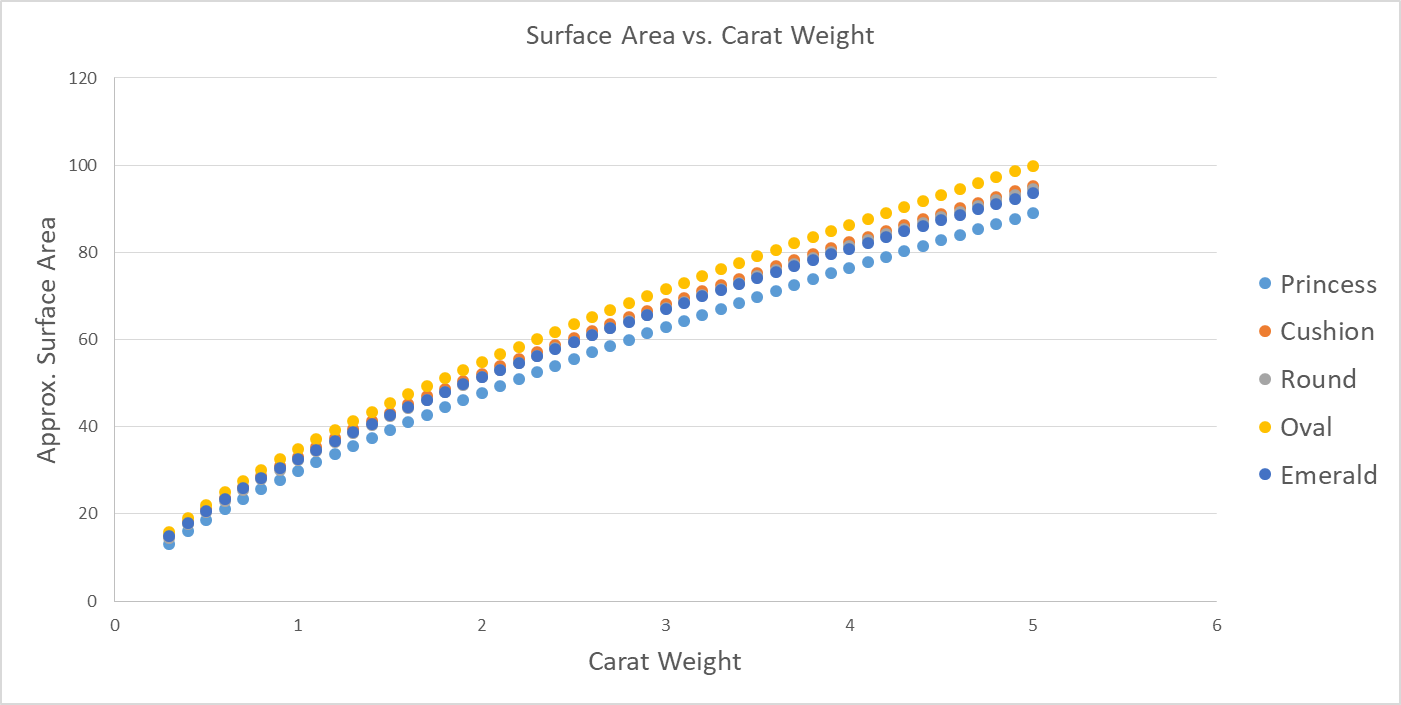January 28th 2022
What is Visual Carat Weight?
By Devin Jones
Get more bang for your buck by using StoneAlgo's measure for a diamond's visual carat weight.
Visual Carat Weight
Visual carat weight describes how large a diamond appears to the naked eye when viewed from above. A diamond's visual carat is calculated by measuring a diamond’s surface area and comparing this measurement to the average surface areas of different carat sizes of the same diamond shape (round, cushion, etc).
Let’s say you are currently looking at two round diamonds that each weigh 2 carats and you want to approximate which one will look larger. Typically we can say that the diamond with the larger length and width, and smaller depth percentage, will appear larger to naked eye. This occurs because diamonds are viewed from above so the surface area of the stone is what an observer will actually see, not the carat weight.
Meanwhile, carat weight (the most common measure for ‘size’ when it comes to diamonds) is not a measure of surface area but rather a measure of weight (and as we'll see very closely related to volume). Below is a scatter plot showing 129 round diamonds, each weighing exactly 2.00 carats with different visual carat weights. As you can see, the majority of diamonds are somewhere between 1.95 and 2.05 (skewed lower) but some outliers appear as large as 2.18 carats (this is that diamond).

🛡️ Check your diamond's visual carat
What can beer teach us about surface area?
There is a direct correlation between larger visual carat weight and smaller depth percentage, but why? Well, weight is directly tied to volume when it comes to diamonds just like it is for, say, beer in different sized pint glasses. You've experienced this same feat of illusion if you’ve ever been to a pub or bar and received a beer in a tall glass. A tall, skinny glass can contain the same exact volume of beer as a short, squat glass but often looks much larger when viewed from the side. However, if you looked at the two glasses only from above so that you saw the openings on top of each glass as a circle, the shorter glass's surface area would appear larger because the glass is wider and should have a wider opening on top.
This is the similar to how someone viewing a shallower (lower depth %, wider length and width) diamond from above will see a larger surface area and perceive the diamond as having a larger carat weight. To illustrate this point check out the below video which went viral when a couple discovered the large and regular sized beers at Applebee’s were nearly the exact same size, despite the large beer’s taller stature.
Which diamond shape best maximizes visual carat?
By studying the 5 most common diamond shapes we are able to evaluate which shape yields the most surface area (a proxy for visual carat weight) per carat. Unsurprisingly, Oval shaped diamonds yield a larger surface area per carat than any of the other top 5 diamond shapes. I say “unsurprisingly” since jewelers have known this fact for decades and will often cite this fun fact when discussing carat weight with customers.

The reason boils down to geometry and is the same reason that an emerald cut diamond looks larger per carat than a square cut princess. The closer a shape is to being symmetrical in every direction (length, width, and depth), the lower its ratio of surface area relative to volume. So a cube will have a lower surface area than a rectangular prism (think a shoe box) with the same volume. The more stretched the shape (like an oval cut or a rectangular cushion or emerald cut), the larger the surface area per carat.
🛡️ Check your diamond 💎 Search 2M+ diamonds
Is there such a thing as too much visual carat?
As we noted earlier, there is a direct correlation between visual carat weight and depth percentage. While it may seem like we are recommending that you find the lowest depth percentage diamonds, this is definitely not the case. A diamond’s dimensions need to be balanced in order for the stone to display optimal light performance. For round diamonds we calculate this using our cut score and for fancy shapes there are general rules of thumb that can be used. If a diamond is too shallow, the diamond won’t return light properly and we’d recommend against buying the diamond even if it appears much larger than its actual carat size. You can read more in our post on depth and table.
🛡️ Check your diamond 💎 Search 2M+ diamonds
How can I calculate visual carat weight?
We calculate visual carat weight for every diamond run through our Diamond Check Tool, so simply head over to the report and enter your GIA ID and carat weight. If you are actively searching for diamonds and don’t have a GIA ID to search then you can head over to our Diamond Search page where we also show the visual carat weight for every diamond recommendation we show. If you have any questions on how to interpret visual carat you can reach out to us on the chat feature at the bottom right of this screen. Good luck with your search!
